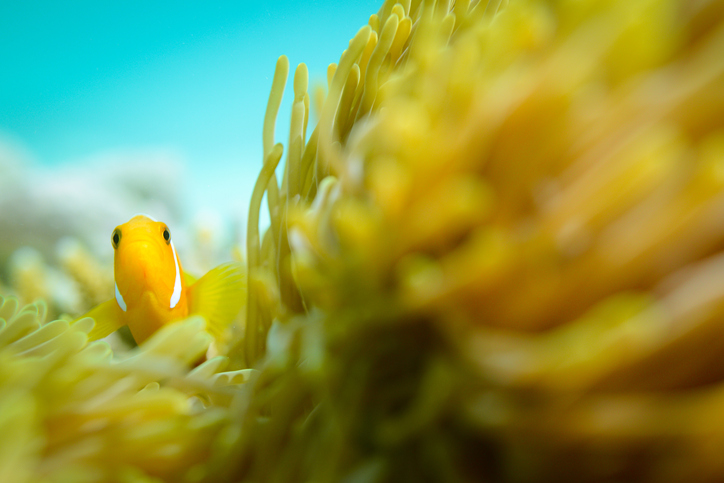
Few movies – especially animated ones – capture the beauty of our seas and oceans quite like Finding Nemo. This 2003 Disney classic did an outstanding job of showcasing the colour and diversity of the world’s underwater habitats, along with all the beautiful creatures that live within them.
Of course, some of the marine animals portrayed in Finding Nemo stole the show more than others. The lovable clownfish, for example, is now regarded as one of the world’s most popular tropical fish thanks to the film’s titular character, while the regal tang, Moorish idol and royal gramma also saw their popularity skyrocket thanks to the much-loved Pixar film.
Now, two decades on from Finding Nemo’s original release, we’re taking a look back at this iconic flick to discover the fish that found their way to the silver screen – many of which you can see right here at Bristol Aquarium!
Clownfish – Nemo and Marlin
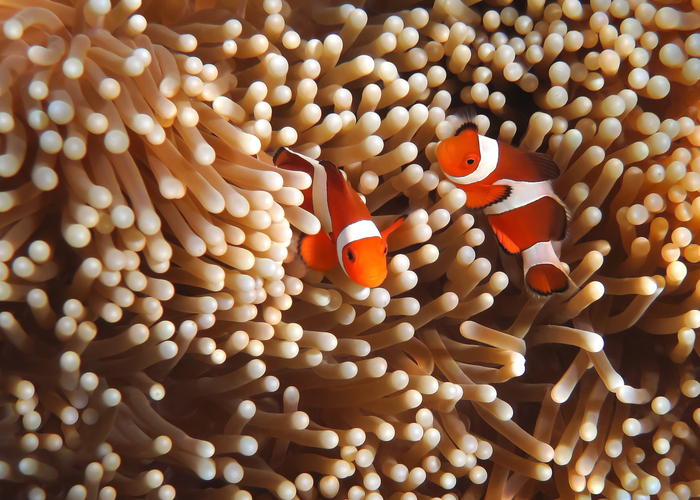
Where else to begin our odyssey through the fish of Finding Nemo than with Nemo himself? Nemo and his anxious pa, Marlin, are depicted as clownfish in the film, and given just how cute these little guys are in real life, we’d say this was a perfect choice.
Clownfish are small tropical fish that belong to the Pomacentridae species family. They’re almost always found living among anemones in coral reef systems, which is why Marlin is so keen for Nemo to stay close to home in the film. Come say hello to Marl’ and son in the flesh at Bristol Aquarium’s Coral Seas exhibit.
Regal Tang – Dory
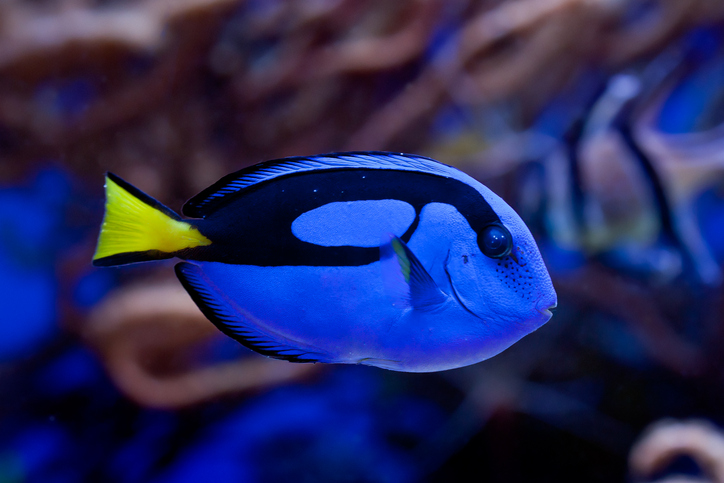
Next is the regal tang or ‘DORY!’ as the species is known to most children who walk through the doors of Bristol Aquarium. Yes, this iconic blue, black and yellow fish depicts Marlin’s lovable sidekick in the Finding Nemo franchise, voiced wonderfully by none other than US talk show royalty, Ellen DeGeneres.
In real life, we’re pleased to report that the regal tang (or blue tang as they’re also known) aren’t characterised by their forgetfulness Instead, they’re solitary, peaceful fish that can become aggressive if they feel their territory is at risk.
Bonus fact: Remarkably, for a relatively small fish, the blue tang can live up to 20 years!
Starfish – Peach
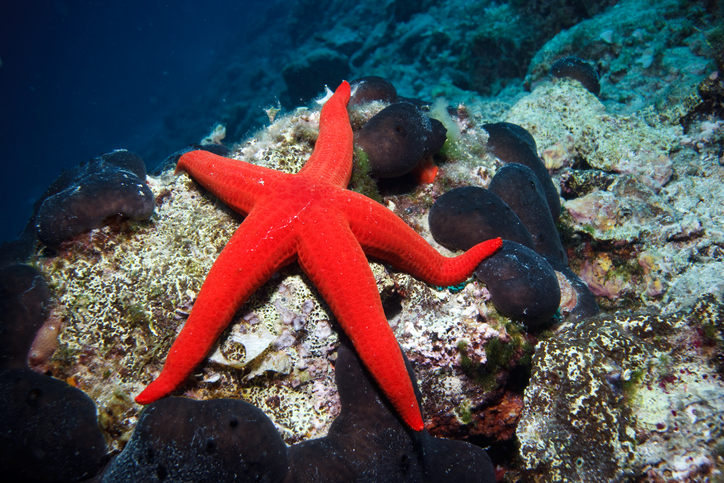
Starfish have long captured the imagination and have been depicted on the big screen hundreds of times. Perhaps the most famous outing for this unique species, however, was in Finding Nemo, with ‘Peach’ the starfish appearing alongside a handful of other tropical fish in the dentist’s office fish tank.
Much like Peach, common starfish don’t move often, but when they do it’s mainly to hunt molluscs – not spy on the comings and goings of dentists and their staff! To get around, starfish rely on tiny tube-like feet all over their bodies, which help propel them along at a frankly glacial pace.
Bonus fact: Most starfish can regenerate their limbs if they fall off or are bitten off by a predator.
Seahorse – Sheldon
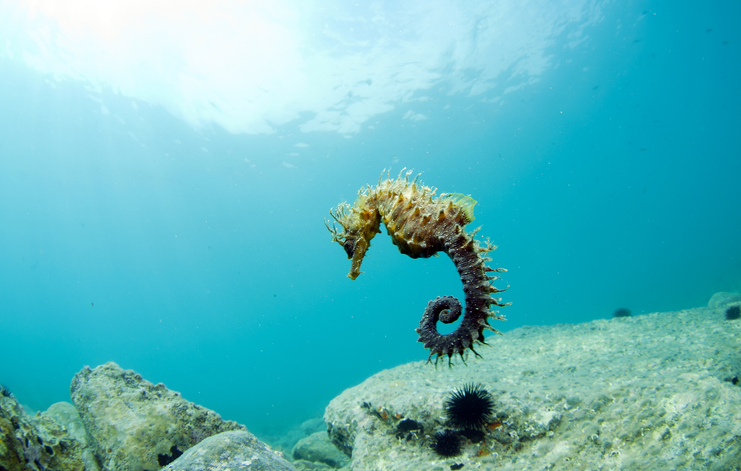
Seahorses have a naturally cheeky and curious persona, so it makes sense that they were chosen to depict Sheldon – a spirited young seahorse that leads Nemo close to the “drop-off” along with their other school friends at the start of the movie.
In reality, seahorses aren’t very strong swimmers, so it’s unlikely that you’d find them attempting anything as dangerous as Sheldon’s exploits. They are, however, masters of camouflage, and their eyes can move independently from one another, much like a chameleon. You can see big-bellied seahorses in the Learning Lab exhibit at Bristol Aquarium.
Bonus fact: Some seahorse species are native to the UK, including the short-snouted seahorse and the long-snouted, or spiny, seahorse.
Butterflyfish – Tad
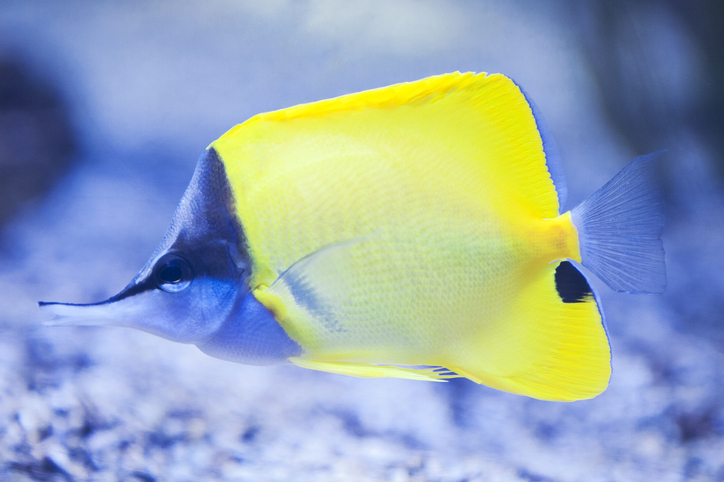
Given that Nemo and Marlin live on the Great Barrier Reef, it’s likely that they share their anemone home with dozens of butterflyfish, including the beautiful longnose butterflyfish that appears as the character Tad in the Pixar movie. Tad is a young fish that befriends Nemo at the start of the film, accompanying him and Sheldon on their adventure to the drop-off.
Butterflyfish like Tad are found in their droves in tropical seas, from the Western Atlantic to the Caribbean and beyond. The longnose has – you guessed it – an unusually long snout, which is perfect for feeding among the tight crevices of its reef bed home.
Bonus fact: There are over 100 species of butterflyfish, some of which you can see at Bristol Aquarium!
Spotted Eagle Ray – Mr Ray
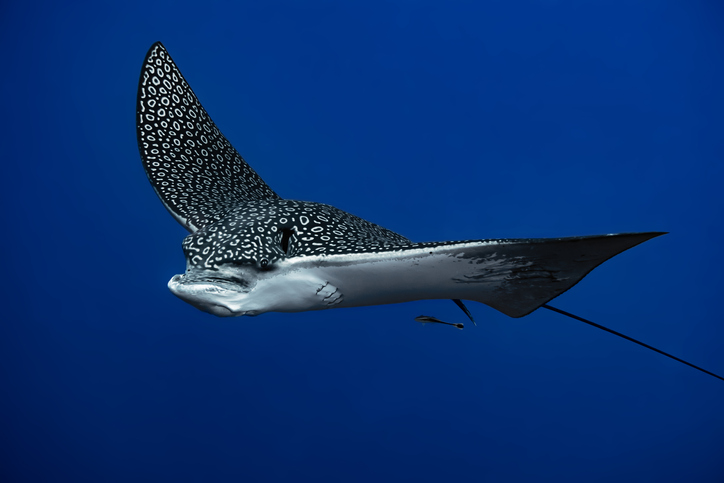
It’s difficult to argue with Pixar’s decision to base Nemo’s teacher, Mr Ray, on the spotted eagle ray. These large, graceful, and intelligent fish are found in tropical, temperate waters from India to Australia, so it’s plausible that one could spend its time teaching the reef-dwelling youngsters of the Great Barrier Reef.
In reality, the spotted eagle ray is a shy, gentle species which is very wary of divers. The fish, like many rays, have a venomous tail spine, and typically swim in open water in groups of around 50-100 animals. While we don’t have any spotted eagles at Bristol, visitors can see their close relatives like the common stingray, painted rays, cownose rays, thornback rays, and undulate rays.
Bonus fact: The largest spotted eagle ray ever discovered had a ‘wingspan’ of over five metres.
Moorish Idol – Gill
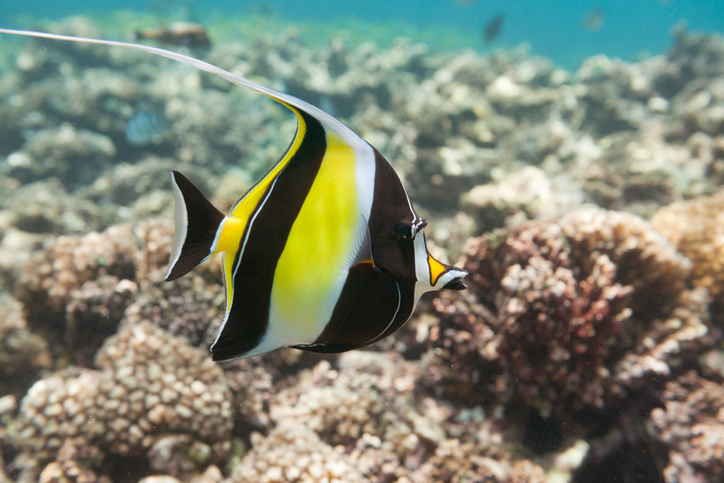
Grumpy Gill lives with Nemo in the dentist’s fish tank in Finding Nemo, and though initially sceptical of the young fish’s bid for freedom, he soon comes to his senses. Throughout the film, Gill and his “Tank Gang” are seen making several escape attempts, though none are successful until Nemo comes along.
In the wild, Moorish idols mate for life and live on coral reefs. Being diurnal, they spend their days hunting for food before returning to the bottom of the reef after sunset. It’s fitting that Gill shows an element of aggression in Finding Nemo, since male Moorish idols are known to do so to protect their mate.
Bonus fact: The name Moorish idol comes from the “Moors” of Africa, who believe that the fish symbolises happiness.
Royal Gramma – Gurgle
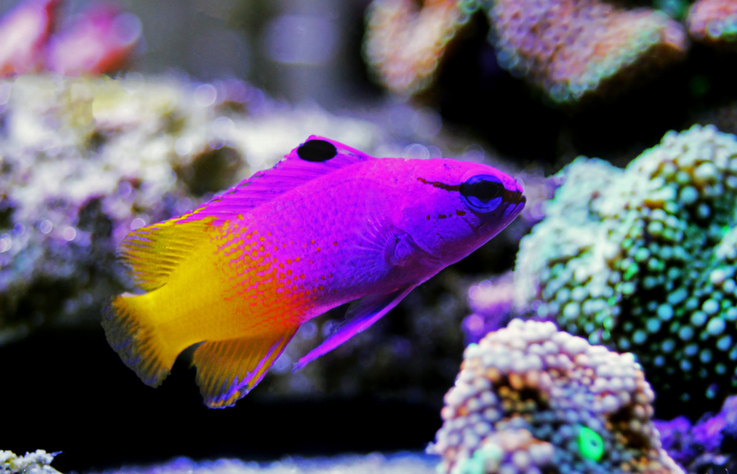
Like Gill, royal gramma fish Gurgle lives in the dentist’s office, though he has a much different take on the notion of freedom than his fellow tank mates. And this makes sense given that the royal gramma species is known for being super peaceful and chill, and unlikely to go looking for trouble unless it finds them.
The royal gramma is among the most colourful fish of the tropics, its body displaying a spectacular spectrum of hues from yellow to purple and back again. Typically, they’re found in the western Atlantic and prefer to live in caves as opposed to reefs.
Bonus fact: Royal gramma are known as parasitic fish, meaning they eat small parasites off the bodies of larger animals.
Pufferfish – Bloat
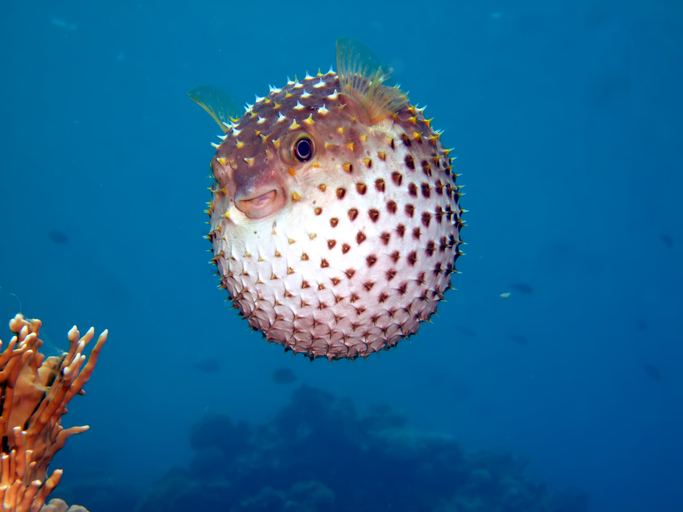
A fitting name for a pufferfish, Bloat is one of the main members of the Tank Gang in Finding Nemo, serving as the host at many of the gang’s regular events. When confronted, Bloat expands into a large, spiky ball, much like pufferfish in real life.
Unlike Bloat, however, pufferfish don’t tend to blow up through anger. Instead, it’s purely a defence mechanism, deployed when they feel threatened by a nearby predator. And since they’re usually covered in spikes, a fully armed and inflated pufferfish is a difficult proposition for even the hungriest foes.
Keen to see remarkable creatures just like Bloat? Head to the Coral Seas exhibit at Bristol Aquarium where you’ll find beautiful examples of Piper and King Edward pufferfish.
Bonus fact: Some species of pufferfish are among the most poisonous animals on Earth, second only to the poison dart frog.
Great White Shark – Bruce
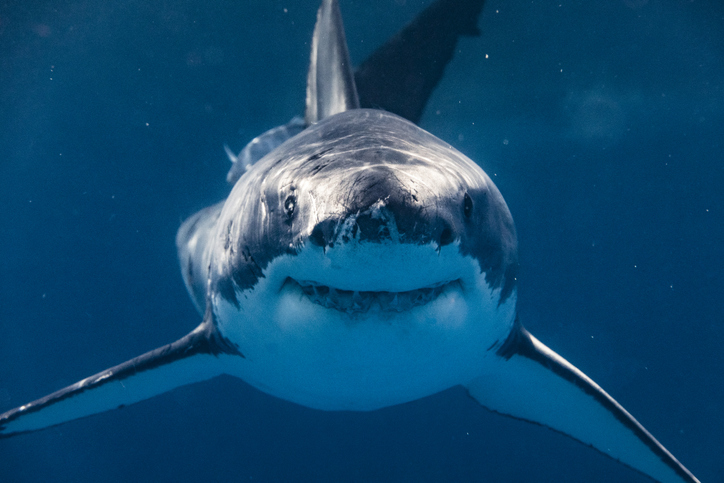
Let’s face it: no sea-based movie would be complete without a great white shark, so Finding Nemo creators had to get one in somewhere. Enter Bruce, a formidable GWS whose outward appearance disguises the fact he’s the leader of the “Fish-Friendly Sharks Support Group” – a band of sharks that share the motto “fish are friends, not food”.
Of course, in reality, fish most definitely are food for the great white, with the species reportedly consuming an average of 11 tons of their fellow sea dwellers every year. Great white sharks typically live in relatively shallow waters, ranging from the US Pacific to the shores of Australia.
Bonus fact: A large great white can weigh up to two tons, about the equivalent of a small hatchback car.
We hope you’ve enjoyed this magical tour through the beautiful species depicted in Finding Nemo. Remember, many of the fish seen on the silver screen can be found at Bristol Aquarium, so tap here to plan your visit for a special up-close encounter.
